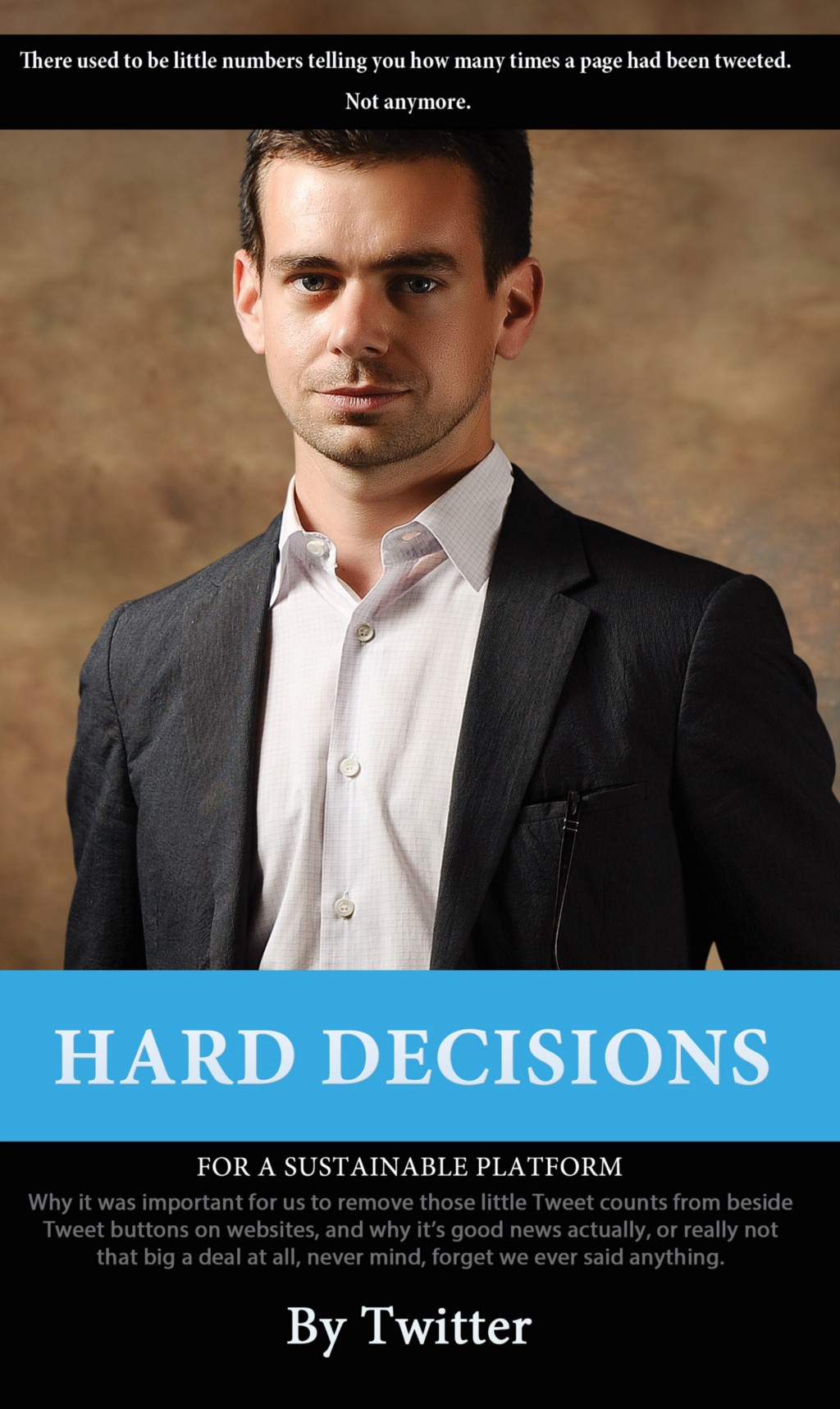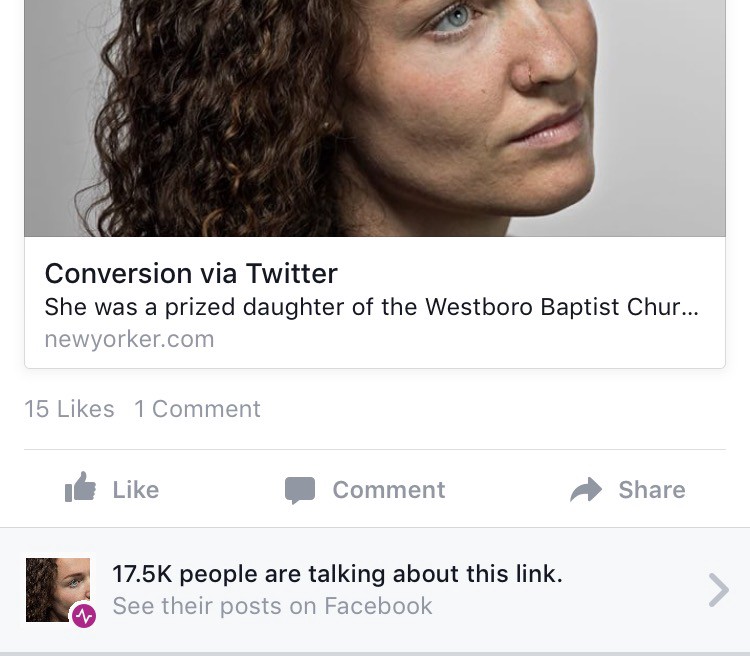Internet Confusing
“[Damon Albarn] freely admits to being baffled by the internet, and tells an anecdote about reading an interview with himself on the Guardian website and not initially understanding that the below-the-line comments weren’t part of the article (‘People were not kind; it was… enlightening’).” [Via]
New York City, November 23, 2015

★★★ The stiffness of the playbills in the breast pocket of the heavy wool coat meant that it hadn’t been needed since the day they went in there. According to the ticket stub in with the playbills, that day had been March 22. There had been clean daylight from the very beginning, to help rouse the children. A skinny little dog, wearing a dog coat, sniffed at the sidewalk outside where the pet-gear store used to be. The Q train was stifling, but the cold made up for that within two blocks. A few clouds appeared on the blue, overhead and reflected in the windows across the street from the office. The afternoon sun up the avenue was blinding but not appreciably warm, and in the time it took for the food truck to cook up pad Thai, the shadow of the buildings crept into the edge of sidewalk where people were waiting. Sun got so far into the narrow parking lot it could only be seen as an incandescence from the depths. The climate control in the office was totally haywire and helpless; people wore knit hats indoors. The back muscles, already tensed, felt the sharper cold of rush hour and started to hurt.
How to Make the Perfect Bone Broth
by Meghan Bean Flaherty

1. Visit nutritionist. Submit to sermon on restorative powers of gelatin, glucosamine, and collagen. Admit to gut neglect and gluten poisoning. Embrace wellness. Accept the broth into your heart. Resolve to save and boil bones and drink the marrow out of life.
2. Research Crock-Pots online. Neglect no comment or review — no matter how grammatically deranged. (Can be done weeks in advance.)
3. Purchase VitaClay slow-cooking appliance ($139) so as to avoid trace quantities of lead leaching into (health) food.
4. Unpack and “season” VitaClay slow-cooking appliance by boiling brown rice for two to three hours, or until heating element first-use smell abates.
5. Dump hot rice mush into bin.
6. Attempt first bone broth. Assemble in clay vessel: carcass of one lovingly pre-roasted chicken, plus variety of soup vegetables, plus parsley springs and splash of apple cider vinegar.
7. Further peruse instruction manual. Discover real bone broth requires twenty-four hours of simmer time; VitaClay maximum is six.
8. Call company. Tweet company. Submit customer service inquiry through company website. Await phone call from well-meaning representative who expresses fulsome sympathy, but advises against off-label usage of appliance.
9. Transfer broth ingredients to normal four-quart saucepan. Bring to boil.
10. Dig rice-mushed plastic packaging from bin. Rinse away starchy slime. Hold over AC vent and, when that fails, pat dry.
11. Ferret through recycling for Styrofoam and cardboard padding. Reclaim UPS delivery box. Evict spider. Wash, dry, and Windex VitaClay. Wipe chicken-greasy fingerprints from manual. Repackage and submit for refund.
12. Go out for evening. Experience pang of worry for the dog vis-à-vis unattended gas flame and irresistible bubbly chicken fat smell. Double back to turn off burner and avoid pet-maiming by ungelled broth. Decide to cheat bacteria by boiling overnight instead.
13. Bedtime. Set broth to simmer (eight hours on “low.”)
14. Despite pervasive, sleep-disrupting aroma, realize broth has not been simmering overnight, though could be considered “warm.”
15. Google “chicken broth safety.” Discover existence of USDA poultry preparation hotline. Call.
16. Wait two hours for poultry-fairy staff meeting to adjourn.
17. Utilize online chat function to “Ask Karen” “about your bone broth situation.”
18. Per Karen, discard entire pot of warmish broth-to-be and all attendant food-borne bugs. Despair at lingering soup aroma. (Others will remark your house smells like Thanksgiving; accept this as the smell of failure.)
19. Order standard-issue lead-leaching Crock-pot from Internet sales megagiant ($39).
20. Roast new chicken, this time with less love. De-meat carcass. Repeat step five, this time in Crock-pot.
21. Set to “low” for twenty-four hours. (Thanks, “Karen”!)
22. Embrace triggering soup aroma. Stir occasionally.
23. Delay pleasure of triumphant decantation moment (six hours).
24. Enlist aid of boyfriend to hold jar under sieve. Hoist three-hundred-pound (approx.) ceramic crock and attempt to pour out manageable stream while avoiding cascade of molten bone shards and bits of chicken blubber. Miss.
25. Acquire small second-degree burn. Replace jar with wide glass bowl and place in sink.
26. Miss again. Lose grip on crock. Drop crock onto sieve/bowl cairn in sink. Lose approx. half of bowl contents.
27. Curse vigorously.
28. Salvage remaining broth. Watch with horror as boyfriend splashes broth-tinged contents of previously dirty sink dish into broth.
29. Spoon out floating coffee grinds.
30. Finish decantation (one-quarter cup.) Re-boil broth to rid of contaminants.
31. Find the smell of chicken soup hereafter deeply troubling.
32. Consider pressure-cooker method advocated by more successful bone-boiling compatriot.
33. Fill two small jars with broth. Drink one, despite suspect detritus. Forget the other in the fridge (one week); discard with regret.
Prep time: 2 weeks. Cook-time: 3 days.
Serves: 1
Photo by Omid Tavallai
The Bird's-Eye View

Earlier this month, in a blog post titled “Hard decisions for a sustainable platform,” Twitter announced a small product change that has altered, in a subtle but widespread way, the way you read/scan/judge/subconsciously process Things On The Internet:
Recently, we announced a new design for our Tweet and follow buttons, as well as a deprecation of the Tweet count feature. We expect to ship these changes by Nov. 20, 2015. We wanted to take a moment to explain how and why we made this decision, as it reflects the kinds of engineering tradeoffs we make every day.
This change concerns those little buttons on top of, under and beside a great number of pages online — the ones that tell you, at a glance, how many people have already shared a story on Twitter. They usually sit next to a similar button linked to Facebook.
Together, these buttons — with occasional share counts from Pinterest and others — have become something like a public ratings system for the web. Years ago, some sites put view counts next to posts, which, among other things, seemed to have an amplifying effect for already-popular stories. Some still do. But later, share buttons encouraged, and then standardized, a similar sort of behavior across the web, albeit on outside parties’ terms. Their ubiquity helped share counts overtake view counts or, more commonly, comment counts as the most visible signal of a post’s popularity.
Twitter’s reasons for changing its buttons and cutting off third-party counters are: “it doesn’t count replies, quote Tweets, variants of your URLs, nor does it reflect the fact that some people Tweeting these URLs might have many more followers than others;” the “count API” was never officially public; back-end tech changes; etc. Additionally, its post notes:
The count was built in a time where the only button on the web was from Twitter. Today, it’s most commonly placed among a number of other share buttons, few of which have counts.
So perhaps Twitter decided that millions of pieces of content on which a Twitter logo with a smaller number set next to a Facebook logo with a much higher number wasn’t doing them any favors. (The numbers aren’t quite comparable, so why make them so easy to compare?) Or maybe it’s interested only in sharing a more thorough and flattering figure. (This sounds sort of like the opposite of a hard decision. Almost like an inevitable one!)
Or maybe this tiny change is of a piece with other changes to the Twitter platform, recent and less recent. Twitter let developers run wild with mobile apps, bought one of them, then marginalized the others. Twitter gave people and companies space to build photo sharing and link shortening apps, some of which became large businesses, before creating its own. Twitter gave people tools to embed tweets on websites, which they used to figure out how to cover Twitter and the conversations happening on it; Twitter then started curating collections of tweets within its app, in styles created by its partners. Twitter is good at giving people enough space to figure out new things. It’s also shrewd about deciding which of those things it should roll back up as its own. (A secondary consequence here that won’t affect most users directly: various analytics services, which publishers and others use to track their posts as well as posts from other sites, will simply no longer support Twitter.)
In recent months, Facebook has been showing users something new: a tally of how many people are talking about a particular link or story across the service.

This is the type of change you get used to quickly. But it’s notable that those numbers never before existed inside Facebook — from the outside, in an article, you could see how many people were engaging with it on Facebook. From inside Facebook, you only saw how many people were sharing a particular instance of the link. Previously, this data was most interesting from the outside; now, on Facebook, the concept of “outside” is less important verging on irrelevant. Perhaps Twitter is thinking something similar.
Why privilege an outside vantage? Why not turn those countless disparate numbers, displayed in all kinds of different ways and for different purposes, into a tidier Twitter rating to be shared and deployed at the company’s discretion, be it widely, carefully, or, whatever, who cares, not at all? After all, according to Twitter’s CFO, the service’s audience is bigger than Facebook’s “depending on how you look at it.” So why not control how you look at it?
Matmos, "Ultimate Care II Excerpt Eight"
Would you like to start your day listening to some music “constructed entirely out of the sounds generated by a Whirlpool Ultimate Care II model washing machine”? I am guessing you don’t think that you would, but I am also guessing that you could be wrong, because it’s a lot more exciting than you would imagine. If you insist that washing machine music is not for you, fine, here’s something that is almost its opposite from Matt Dunkley. If you like Philip Glass you’ll like this.
But maybe they’re both something you enjoy? Good! Enjoy!
How This Cool Toothbrush Company Made an Awesome eCommerce Website
by Logan Sachon

Sponsored by Squarespace.
The Goodwell Co. makes sustainable and compostable toothbrushes and flossers, and that’s just the beginning of what the company hopes to accomplish. But before they could sell their first toothbrush, they had to have a website, and that’s where Squarespace came in. Patrick Triato, who co-founded the company with Aaron Feiger, spoke to us about the company and their super slick Squarespace-made site, www.thegoodwellcompany.com.
Hi, Patrick. Tell me about The Goodwell Company! How was it born?
The Goodwell Co. was born out of the perfect storm of circumstances. I’ve been bringing products to market for about 15 years and I hit a point in my career where I didn’t want to continue leaving a “legacy of trash,” so to speak. I’ve been a product designer and engineer on literally hundreds of products, and I wanted to build something that I could truly stand behind and be proud of mass manufacturing. There is also a market and ideological shift going on where greener products and sustainable forms of living regarding products, lifestyle, architecture, transit, and energy are disrupting the status quo. Goodwell Co. is changing the way we manufacture and consume personal care, starting with leading the way in smart, sustainable, and subscription based oral care.
At what point did you decide that you needed a website?
Immediately. To truly disrupt our market, we needed to go direct to consumer, which means launching a website almost before we even have finished products to sell!
How important is your website to your business?
Absolutely crucial. Right now our sales are 95% B2C through our website, and 5% at retail locations.
Had you built a website before?
I had a hand in building a few websites before Squarespace existed, and the task was always daunting. It took a team of people to get the most basic website up and running — and that is before you plug in e-commerce!
How did you choose Squarespace?
Choosing Squarespace was easy; the free trial is honestly what had me sold. I tried it out for a few days, watched some tutorials, asked a few questions, and the next thing I knew I had a beautifully clean site ready to launch.
Can you walk me through how you designed it?
We sketched out a user experience map of how we wanted someone to click and scroll through our site, then we looked at the templates to see which one was the closest to our vision. We had to add a few custom coded tweaks that were pretty basic and ended up with exactly what we envisioned.
Tell me about your cheeky brushing teeth gifs! I love them.
I love that you love it, that is exactly what we were going for. Our culture at Goodwell is key to our products and our vision for the future, it’s not like brushing your teeth is going to go out of style any time soon, so we want to do unexpected and creative things all the time to keep it fresh and fun.
Do you feel like the site can grow with your company?
I don’t see any reason why not at this point, catch up with us in a year and ask the same question!
What’s the feedback on the site been like?
Great feedback, there literally hasn’t been a single complaint about where to find something or that something has crashed or errored out, which is pretty amazing.
You’re obviously a designer. How do you feel about Squarespace for non-designers?
Whether or not you are a designer, you’ve undoubtedly heard the saying,” It’s all about having the right tool for the job.” In a nutshell, this is how I feel about Squarespace.
New York City, November 22, 2015

★★ The gray sheets of cloud were interestingly rumpled and torn but beyond them was nothing but more sheets of more gray. The brief day never had a chance. A housefly, still alive in the unfreezing days, bumbled into the kitchen, then to the bathroom, where it should have been easy to find but was not — to appear, much later, near the huge pomegranate on the table an instant after the pen wrote “A housefly.” Some of the deep autumn flies had been so sluggish they could be knocked out of the air with a hand, but this one sustained a high-summer vanishing act. The curdled clouds stayed and stayed over Manhattan, though they went into plain flat gray in a line not far into New Jersey, and far away in the northeast a stripe of pink held through the afternoon. Outside was dimness and chill. Empty lumber racks awaited the annual burden of dead evergreens; people were willing to line up in the cold outside the Bloomingdale’s outlet trying its luck where the Urban Outfitters had been. In the midst of the piano lesson, a sudden lilac light pushed its way into the room. The gray had finally shredded after all. An ugly flat glass building stood plated in brilliant copper. Vibrant pink scraps moved rapidly under a sky of electric blue.
The One Cool Trick All Men Need To Know To Do Yoga
See, there’s one rule of yoga, and it’s that you don’t make any noise at all.
Yeah you just —
It’s crazy, yeah. ABSOLUTELY none. You just keep breathing.
No, there’s no grunting. That’s for picking up dudes at CrossFit. Oh you’re straight, haha, weird, sorry. Anyway like, if you’re straining and it hurts, you should like just stop and chill out. You don’t really do like “strain” in yoga?
Definitely no one’s laughing at you if you just lay there for a few minutes. But they might be if you keep making all these noises, you know what I mean…
So, actually, there’s no moaning either. There’s no “mmmm”ing. There’s definitely no “mmm that’s so delicious” noises, that’s fucking awful. You’re not eating a box of assorted pies in here.
Definitely not any kind of talking, particularly crazy-mumbling to yourself.
Not even sighing, no. You just breathe through your nose the whole time. If you stop and listen do you hear all the people busy not making noise? Is it possible for men to notice when they’re the only one making noises?
You’ll notice when you’re not breathing because you’ll start grunting again.
Sometimes things are just hard, man.
You can laugh if something funny happens though! 🙂
It’s a pretty… chill situation.
So be chill.
Is it possible for men to go an hour without expressing their feelings in a performative way that is intended to induce emotional care-taking labor around them?
Pretend maybe that you’re in a prison and that you’ll be murdered if you make any noises at all, could be a very fun “mind game” for you to play.
Francis, "Horses"
Just when you think you’ve got humanity all figured it reveals an astounding capacity to shatter whatever limits you had already assigned it. For example, as someone who considers himself too cynical to be shocked by anything anymore, I have to say it’s still a surprise to see that people can actually be even more aggressively brainless, over even more meaningless matters, than I had previously given them credit for. Whatever degree of doltish pig-ignorance you set as the base level of sheer human stupidity, it can always be surpassed, often by the very people who should know best how things work, and the eagerness with which they clamor to display their empty-headedness is almost charming. So I am thankful; it’s nice to be reminded that, even now, there are things that can change the way you see the world. Something else to be thankful for: the upcoming Francis record, from which yet another winning track has emerged. Enjoy.
